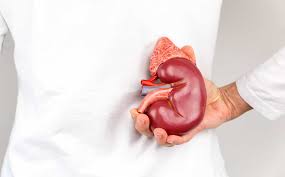Article
Sutent Treatment Breaks Are Feasible in Kidney Cancer
Author(s):
Sutent treatment breaks seem to have no effect on clinical efficacy for patients with renal cell carcinoma.
While Sutent (sunitinib) has clear clinical benefits, it also has a range of toxicities during chronic therapy for patients with metastatic renal cell carcinoma (mRCC), making treatment planning a challenge. However, a recent phase 2 study found that Sutent treatment breaks are feasible, and the clinical efficacy seems to not be compromised.
“What this study implies is that patients who have stable disease while on sunitinib (in our study four cycles of therapy), can be given at least a short break from treatment. As such, patients who are experiencing difficult side effects or just want to be off therapy for a few weeks for improved quality of life, should be considered for therapy breaks,” lead study author Moshe Ornstein, M.D., Cleveland Clinic Foundation, said in an interview with CURE.
Thirty-seven patients were enrolled into this study, 70 percent being male with a median age of 63 years, and 92 percent having a good performance status.
Sutent was dosed at 50 mg once per day for the first 28 days of a 42-day cycle (4/2 schedule) with a treatment of four cycles with the absence of unacceptable toxicity or RECIST-defined progressive disease (PD). Patients with at least a 10 percent reduction in tumor burden could hold the treatment and repeat imaging every two weeks, which would continue until there was an increase in tumor burden by 10 percent or more compared with scans immediately before the break in Sutent treatment. Sutent was then administered at the patient’s previous dose for two cycles.
Patients who did not achieve less than 10 percent reduction at the end of any cycle continued with their current Sutent dosage and schedule.
The primary endpoint of this study was to determine the feasibility of an intermittent Sutent dosing schedule, with the secondary endpoint being objective response rate (ORR), progressive-free survival (PFS) and overall survival (OS) measured from the start of treatment.
Of the 37 enrolled patients, 17 could not go to the intermittent phase. Of these 17 patients, 13 patients had PD, one developed grade three nephrotic syndrome possibly related to Sutent, and three patients withdrew consent. Twenty of the 37 patients were eligible to go to the intermittent phase at the end of four cycles and all 20 entered.
Of the 20 patients who entered the intermittent phase, 16 restarted therapy after initial break, three had not yet reached the required tumor growth to restart therapy, and one withdrew consent to seek a treatment facility closer to home. Among the 16 patients who had restarted therapy, 12 had sufficient tumor regression to allow at least one other break from therapy, but three developed PD before any subsequent treatment breaks, and one stopped therapy due to adverse events (AEs).
Among the patients who entered the intermittent phase, there was a total of 83 breaks among all patients, with a median of three. The median treatment break duration was 8.3 weeks (range, 4.7-192.1) and the median period of retreatment with Sutent was 12 weeks (range, 2.0-86.9).
The median follow-up was 21.6 months for all patients, 32.9 months excluding the patients who withdrew early, and 49.1 months for patients still alive (13 patients).
All patients achieved a median of 1.7 cm tumor reduction during the first four cycles, with 17 patients (46 percent) achieving a RECIST-defined partial response. The median tumor reduction of the 20 patients eligible to enter the intermittent phase was 2.0 cm (45 percent).
The median PFS for all patients involved in the study was 22.4 months and 37.6 months for those 20 patients who entered the intermittent phase, with a median OS of 34.8 months.
Of the total number of patients enrolled in the study, 25 (68 percent) patients discontinued treatment at the time of data analysis (June 30, 2016) due to progression, three (8 percent) due to AEs, 4 (11 percent) withdrew consent and one (3 percent) died during the study.
For 17 patients, the 50-mg dosage was reduced to 37.5 mg during the first four cycles. Nine patients were switched from a 4/2 schedule to a 2/1 due to toxicity levels. The most common AEs of any grade include fatigue (89 percent), mucositis (86 percent) and thrombocytopenia (84 percent). The most common grade 3 AEs consisted of hypertension (38 percent), neutropenia (24 percent) and fatigue (22 percent).
“Based on our clinical practice, we were certainly expecting to see patients tolerate some breaks from sunitinib therapy. What was more interesting, however, was the range of breaks patients were able to experience without having disease progression,” said Ornstein.




